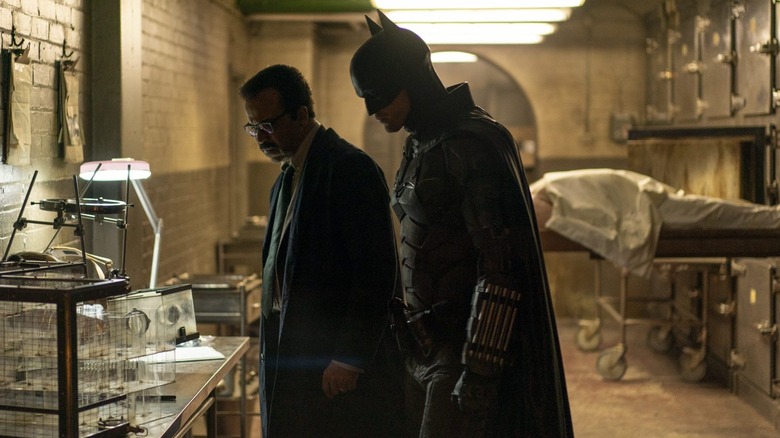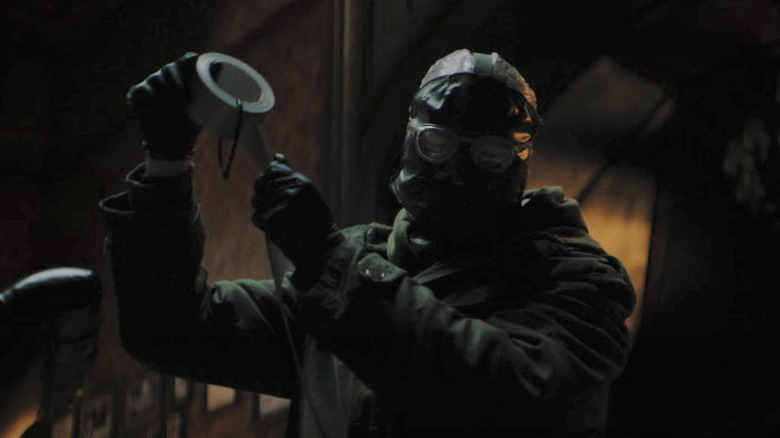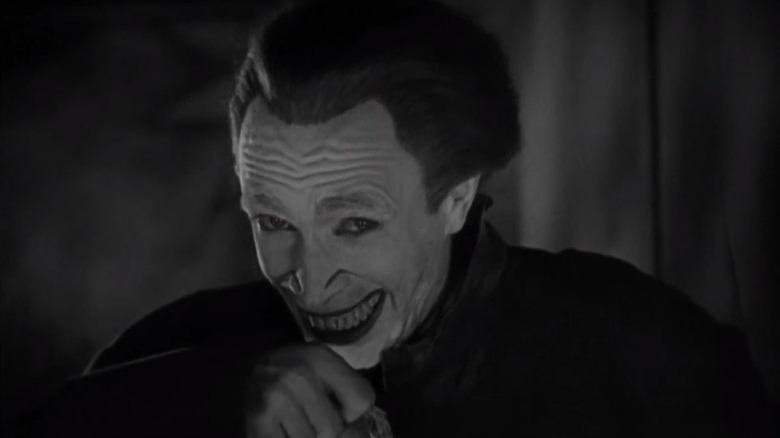The Batman Cinematographer Greig Fraser On Why THAT Character's Face Was Hidden
Warning: This article contains major spoilers for "The Batman." Please proceed with caution.
Matt Reeves' "The Batman" goes a long way to build a beautifully dark tapestry with its portrayal of Gotham City, a city that truly feels like the worst place on Earth. This is also a Gotham you can easily see populated by all kinds of colorful comicbook-y villains. Sure, the film mostly focuses on grounded, "realistic" villains like Falcone and Riddler, but this is the first Batman film since Joel Schumacher's "Batman & Robin" where you can truly imagine someone like Kite Man, or Mr. Freeze, or even Condiment King terrorizing the city.
But while we sadly see no hint of Mitchell Mayo in "The Batman," we do get a small cameo of a member of Gotham's crime royalty, even if his face is all obscured.
The prince is back
That's right, we have a new Joker in town! In the final minutes of "The Batman," Riddler is lamenting his defeat while in Arkham, and he starts talking to another inmate who introduces himself as a friend. That inmate's name: Albert Einstein — I mean, random unnamed inmate played by Barry Keoghan, who is clearly the Joker.
The scene is short, and we don't even see Joker's face that well, so if you're not paying attention you might even mistake him for Two Face, but there is no mistaking that maniacal laugh. Of course, having our third Joker in just six years may be overkill, but just because you show people the clown, doesn't mean you have to make it all about him. In a recent interview, Matt Reeves explained that he was not trying to do an end credits scene like Marvel that would tease the next film. Instead, Reeves said his idea was to say, "Hey, look, if you think that trouble is going to go away in Gotham, you can forget it. It's already here. And it's already delicious."
This is all well and good, but why the secrecy? It is one thing to want to surprise audiences and not reveal Keoghan's casting on the press tour, and another is to barely show half the guy's face in the film. Speaking with The Wrap, cinematographer Greig Fraser was rather coy about revealing much about the scene. He did echo Reeves' sentiment of wanting to just add some flavor to Gotham City and show that this is a place full of villains.
"I can't comment on who it is, but this Gotham is a bubbling cesspool of crime, isn't it? So giving a little kiss or an introduction of who else may be living in this prison. I mean, what a fantastic opportunity to do that. And again, going back to the adage of you don't want to see too much. You never want to see too much. Sometimes seeing too much can distract from some of the beauty or joy of watching films."
The laughing man
One interesting thing about Keoghan's proto-Joker is that he looks quite different from other portrayals of the character. Even out of focus and obscured, the prosthetic makeup is a lot more exaggerated than say, Jared Leto's or even Heath Ledger's Joker.
That is because Matt Reeves didn't go to comics or other "Batman" movies for inspiration. Speaking to Variety, Reeves talked about going straight to the source, the film that inspired the Joker in the comics: Conrad Veidt's performance in the 1928 film "The Man Who Laughs," in turn based on a Victor Hugo novel.
"It's like 'Phantom of the Opera,'" Reeves said. "He has a congenital disease where he can't stop smiling and it's horrific. His face is half-covered through most of the film. He has a congenital disease where he can't stop smiling and it's horrific. His face is half-covered through most of the film."


